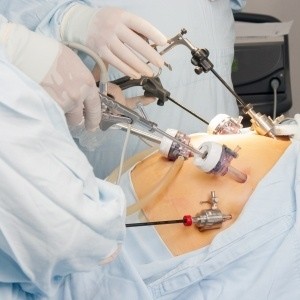What is Laparoscopy?
Laparoscopy, also known as diagnostic laparoscopy, is a surgical diagnostic procedure used to examine the organs inside the abdomen. It’s a low-risk, minimally invasive procedure that requires only small incisions.
Laparoscopy uses an instrument called a laparoscope to look at the abdominal organs. A laparoscope is a long, thin tube with a high-intensity light and a high-resolution camera at the front. The instrument is inserted through an incision in the abdominal wall. As it moves along, the camera sends images to a video monitor.
Laparoscopy allows your doctor to see inside your body in real-time, without open surgery. Your doctor also can obtain biopsy samples during this procedure.

Why is Laparoscopy performed?
Laparoscopy is often used to identify and diagnose the source of pelvic or abdominal pain. It’s usually performed when noninvasive methods are unable to help with diagnosis.
In many cases, abdominal problems can also be diagnosed with imaging techniques such as:
- Ultrasound, which uses high-frequency sound waves to create images of the body
- CT scan, which is a series of special X-rays that take cross-sectional images of the body
- MRI scan, which uses magnets and radio waves to produce images of the body
Laparoscopy is performed when these tests don’t provide enough information or insight for a diagnosis. The procedure may also be used to take a biopsy, or sample of tissue, from a particular organ in the abdomen.
What are the risks of Laparoscopy?
- Fevers or chills
- Abdominal pain that becomes more intense over time
- Redness, swelling, bleeding, or drainage at the incision sites
- Continuous nausea or vomiting
- Persistent cough
- Shortness of breath
- Inability to urinate
- Lightheadedness
